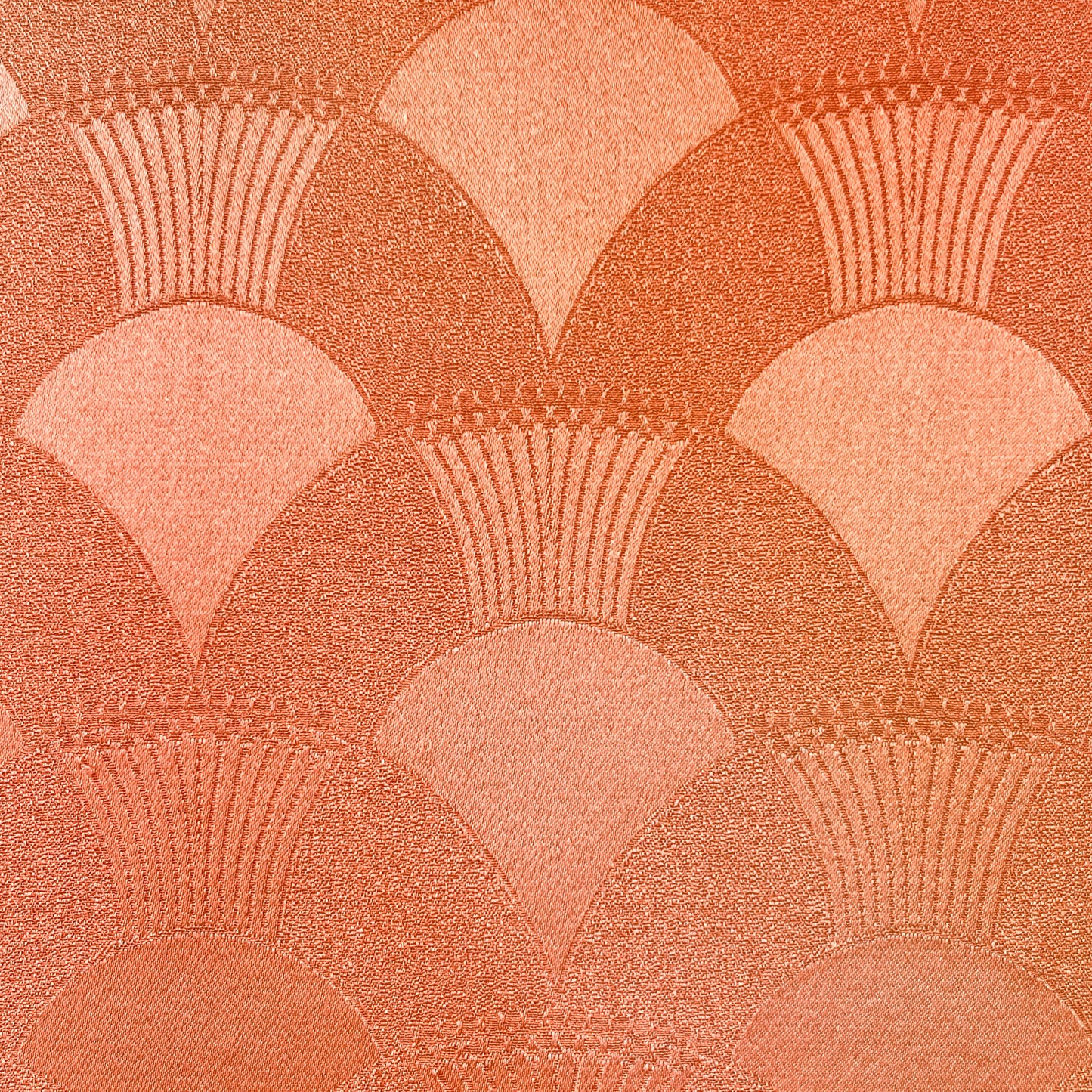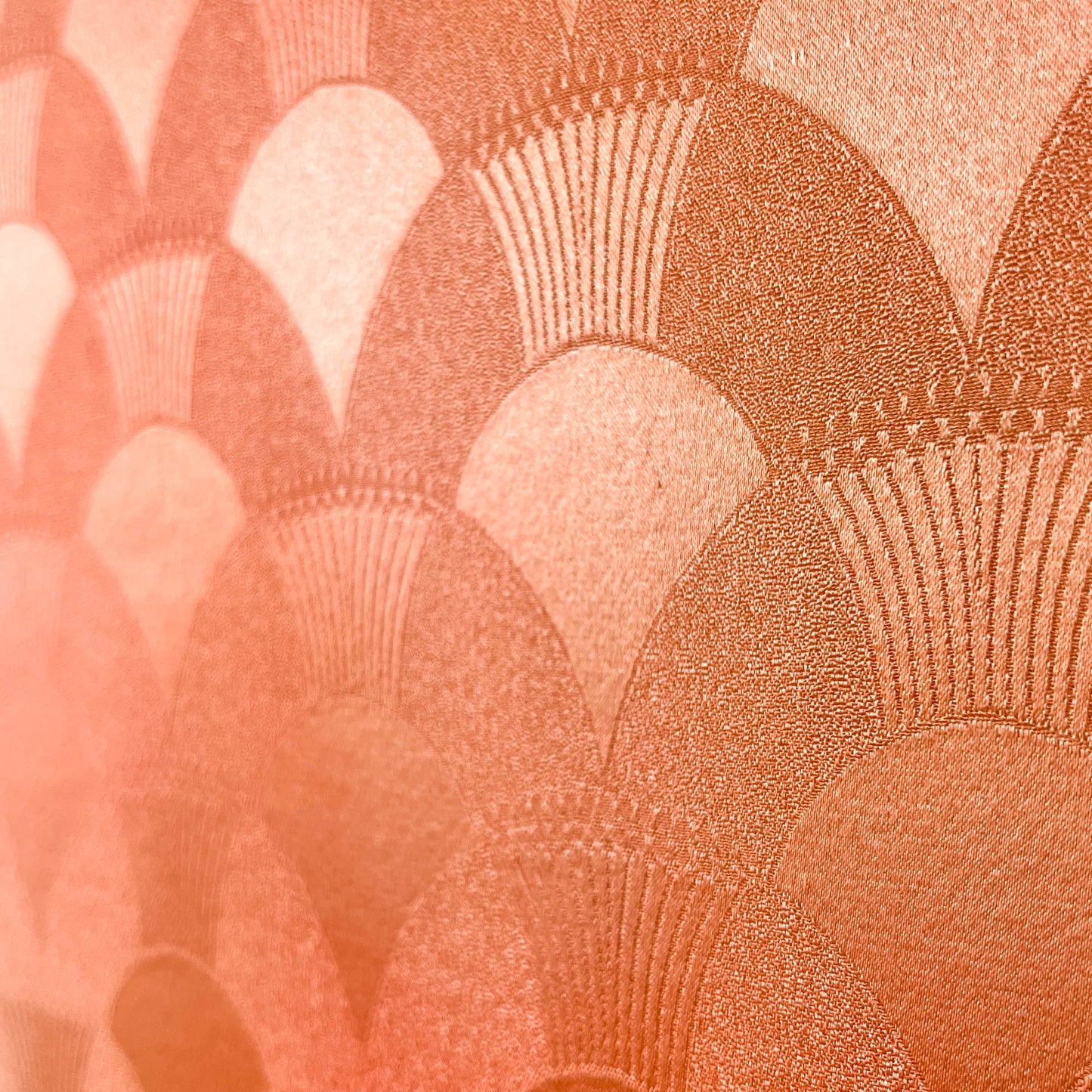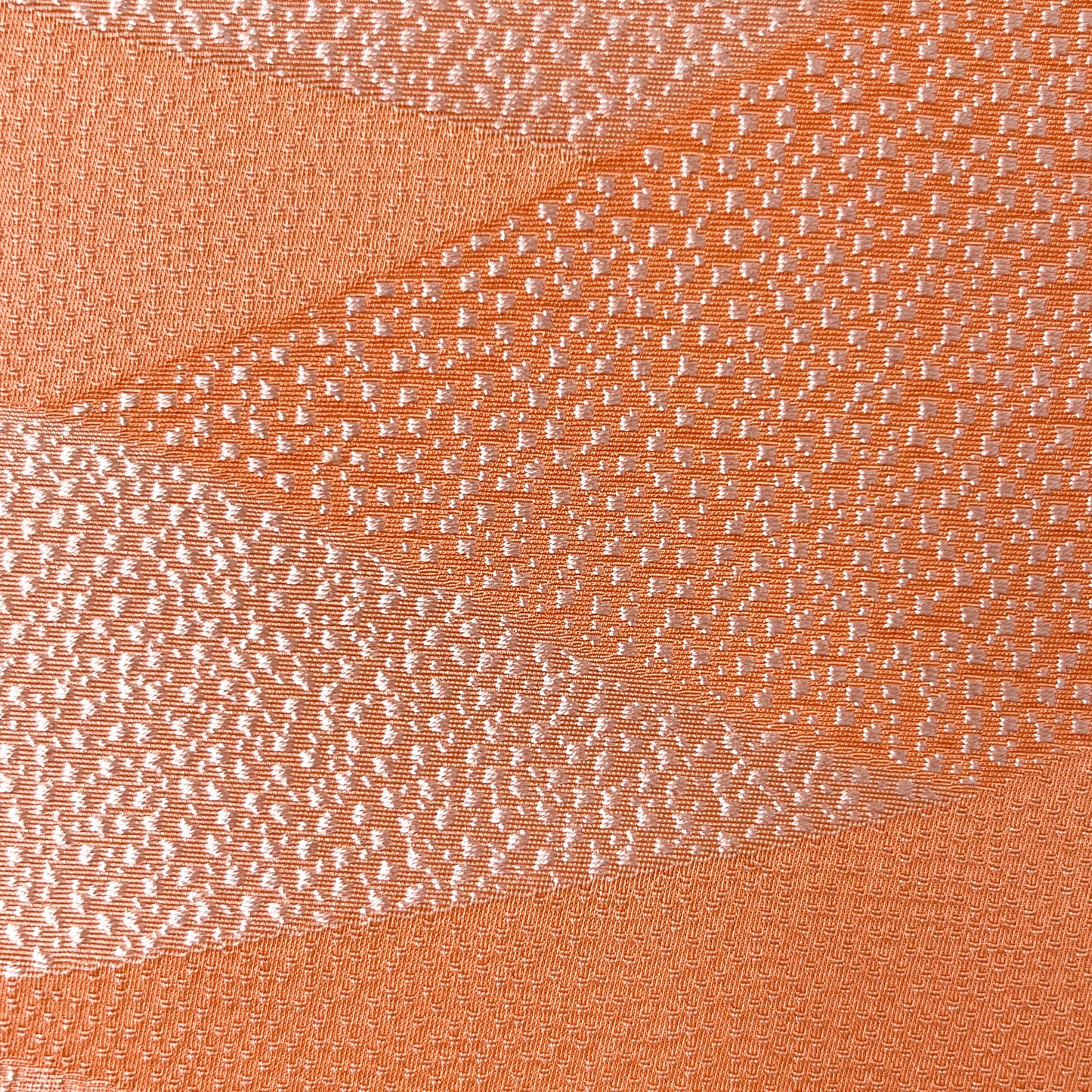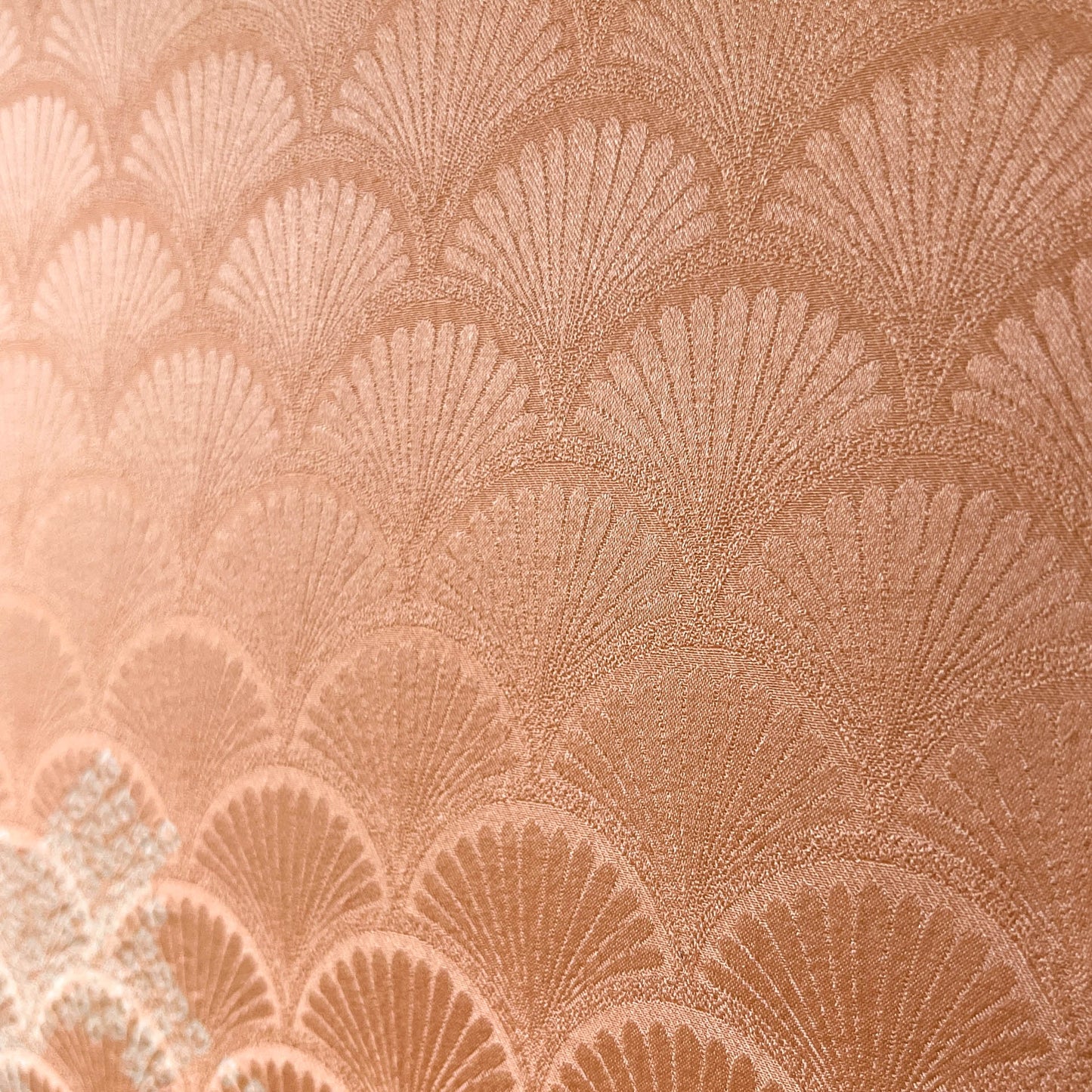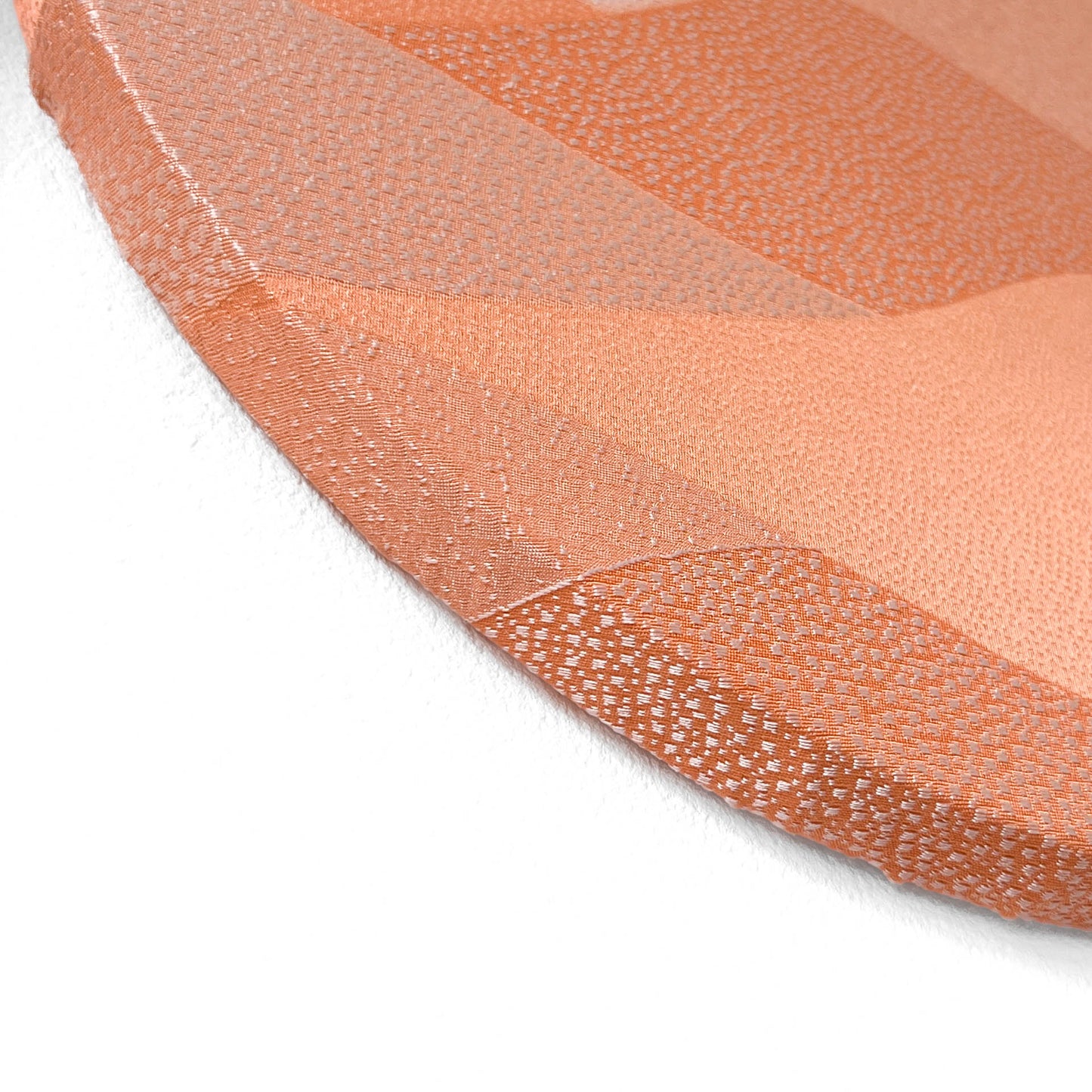On Coral Waves ~Everlasting~
On Coral Waves ~Everlasting~
Det gick inte att ladda hämtningstillgänglighet
Size
Diameter approx. 30cm x 2cm x 3 items.
Materials
silk (outside-layer) , wooden frame, cotton linen canvas (under-layer)
About this canvas
This kimono canvas set portrays mountains surrounded by the sea. While each of the three pieces is crafted from different kimonos, they all share common nature motifs and vibrant coral colors.
Period / Story
All three kimonos used in creating this canvas set were crafted during the late Showa period (1960-80ies).
Explanation and meaning of pattern and colors
The left canvas showcases an unusual pattern where the depiction of ocean waves on the original kimono resembles a peacock, imparting an oriental ambiance.
Seigaiha (ocean waves) pattern is considered to be an auspicious pattern, characterized by waves that seem to extend infinitely, carrying wishes for eternal happiness and a peaceful life for all.
The middle canvas features a kimono with a "tozan" mountains pattern achieved through various dyeing processes within a single color. This pattern is inspired by distant mountain ranges and has been a recurring motif in paintings and crafts since ancient times. In dyeing and weaving, gently sloping semicircles are often used instead of steep mountains.
The kimono on the right canvas is woven with a chrysanthemum sea pattern, adorned with a petal design on a coral-colored ground. The hem and sleeves on this kimono were embellished with a "haze" pattern created using the Kanoko-shibori technique.
The "chrysanthemum seigaiha" pattern arranges chrysanthemum flowers, symbolizing longevity, to resemble ocean waves. Similar to the ever-repeating gentle waves, it signifies enduring peace and tranquility.
The "haze" pattern is employed to convey perspective and the passage of time, symbolizing "eternity" in its cyclical appearance and disappearance. For the sleeves and hems, the "kanoko shibori" technique is used, involving folding the fabric into quarters and wrapping the corners with thread seven or eight times around a circular dot. This creates white squares with faintly dyed tips, resembling the white speckles on a fawn's back, hence the name.
The deer, as a "messenger of the gods," is often associated with good luck, vitality, and fertility.
The term "coral color" refers to a bright red shade resembling the skeletal structure of red coral, which is also described as salmon pink in modern times. It is believed that this color name was derived from the specific hue of red or peach coral. During the Edo period, coral was popular in various forms, such as jewelry, including kanzashi (ornamental hairpins).
In Buddhist sutras, coral is regarded as one of the "seven treasures." Crushed coral from China is also used in Japanese paintings and other forms of art as a pigment.
Characteristics of the fabric
The left and right canvas fabrics feature a weaving pattern that beautifully replicates the appearance of blue ocean waves. When exposed to light, the outline of these waves appears to glisten like shimmering scales.
The "tozan" pattern, artfully expressed through the separation of the plain canvas in the center and the intricate pattern dyeing, employs the "yose-komon" technique. In this method, small patterns resembling hail, sharks skin pattern, and more are meticulously decorated on each mountain.
"Edo komon," created using delicate and advanced dyeing techniques, gives the appearance of a solid color from a distance. It originated during the Edo period (1603-1868) and remains highly popular and esteemed as formal kimono attire to this day.
Decoration Advice
Canvas can be displayed on a table, wall, etc. Hanging on a wall requires hooks, tacks or nails. It can also be displayed propped up on an easel. Ideal for a room makeover, housewarming gift, present, or souvenir for a loved one.
Precaution
All the works are made from real kimonos, antiques and vintages. For this reason, the fabric may have traces of long-term use and minor fabric damages. In case there are any scratches or stains, we always add a photo of the area on the item page, so please check before purchasing. Regarding precaution, cancellation and refund policy, please refer to the refund policy in the footer section of the site for information.
The last pictures in the gallery are the pictures of the reverse side of the canvas, the attachments and the package.





